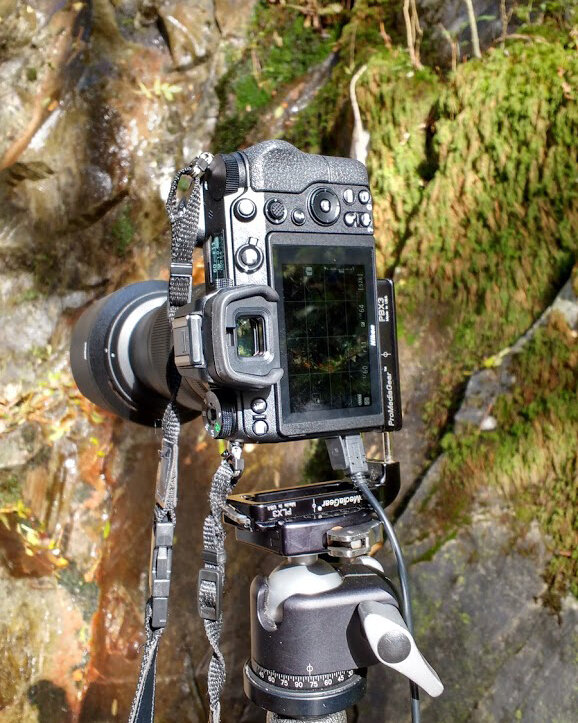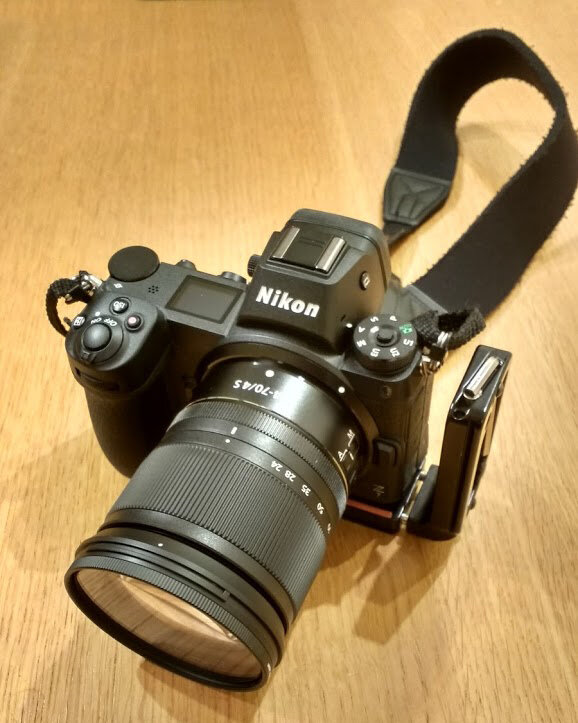I hate being an early adopter. I never buy stuff on the first day. I resent being an unpaid beta tester. I’d much rather wait until the teething problems have been sorted. Until now….My Nikon Z7 arrived this morning. Without wishing to rehash my leaving Fuji post, I’ve just sold all my Fuji kit and invested in Nikon’s brand new full frame mirrorless offering. I’m looking forward to getting to know this camera. There are already issues of course, as I realised there would be from the very outset. Jumping early always involves some pain, my intent is to get that pain out of the way as quickly as possible. It’s worth bearing a few of points in mind:
I didn’t buy this camera to make my photographs better and I remain very pleased with the output of my D810 in every way. I’m not looking for dramatic obvious improvements.
The initial rationale for this purchase was to replace the Fuji with another lightweight camera for longer walks, higher fells. The fact that Nikon have produced such a well specified camera opens the probability that it will replace rather than complement the D810.
I’m a pony with a limited number of tricks. I’m not trying to review this camera, just share how it works for me. I’m not interested in superfast autofocusing, ultra high ISO use or overall speed of use. I work slowly and methodically and don't photography people, animals, stars, pets, sports, weddings etc.
First ImpressionsThis is a lovely camera that feels just right in the hand. Start up time is plenty quick enough for me. The EVF is the best I’ve seen and a step up even from the more than decent Fuji X series. Part of my reason for the move was to leave optical and use an EVF both to make viewing though ND filters easier and to include a Histogram in the viewfinder while composing. I also like being able to review through the viewfinder as it avoids the need to use glasses or a loupe. As a long term Nikon user, pretty much everything falls straight to hand and the interface is self explanatory by and large. The camera is small and light without stepping into insubstantial or ‘fine for small hands’ territory. There are so far, no hidden surprises and the cameras been a pleasure to use out in the field today. It feels small but solid and resilient. Image quality seems as one would expect and the 24-70mm lens seems to be very good though perhaps not as outstanding as has been suggested. Much more remains to be seen on that front. Specific ObservationsUnboxingI’m unable to get excited over the whole ‘unboxing’ phenomenon however the departure from the Nikon Gold boxes is a shame. Slightly more of a shame is the extremely ‘low rent’ box and packaging. You may have just spent £4K on a camera but you wouldn’t know it from the boxes. Remote CableNikon have abandoned their proprietary 10 pin round (pro) connector for their own equally proprietary push in (consumer) rectangular plug. Although over priced, Nikon’s MC remotes have always been well made. They currently offer no replacement for the MC-36A and so any wish for a remote with a timer built in has to go to the aftermarket suppliers. Not a problem in itself but choice is restricted. This also has a knock on effect with the use of L brackets. I assume this is part of a planned move to leave wired connection behind and perhaps we’re not at fruition yet. I’d hoped that SnapBridge might provide a solution of sorts but it seems there is currently no way to set a timed exposure of say 2mins/3 min etc. We may of course see some aftermarket activity in this sector. I tried using SnapBridge as a remote this afternoon, but abandoned to re-visit the manual as it seems a long winded process. I tried it because the remote cable provision is awful. Even without an L bracket the straight plug cable sticks out a long way and is very prone to getting knocked. I can see the socket being equally prone to damage. With the L bracket, although the cable just about fits, it’s not a happy fit and again I can see damage resulting. There are two aftermarket remotes currently doing the rounds on Ebay etc which have right angle plugs. This is an infinitely better design except that the plugs bend the wrong way and make the cable foul the bracket. I’m currently working on modifying one to see if an improvement can be made. Most of the problem could have been avoided if they’d used a micro USB. This, for me, is the only really disappointing aspect of the camera.L Bracket useSeeing Arca fit L brackets in use so often by landscape photographers probably gives rise to a view that they are a commonly used accessory.This clearly isn’t the case or manufacturers might be more helpful in the placement of remote connections. I’m an L bracket addict and find it hard to work without one.Two problems emerge using one with the Z (as they did with the Fuji X-T1/2). The upright part of some brackets foul the cable access points for remotes. If you find a bracket that allows access, the exiting cable prevents the attachment of the L bracket to Arca fit tripod head in the portrait orientation. I solved this for the Fuji by using a ProMedia gear universal bracket which allows the vertical section to be moved away from the side of the camera by two sliding rails. This will also work for the Z. However for this workaround solution to work really well requires a cable with a right angle connector. The L bracket I have used is the Promedia Gear PLX3xhttps://www.promediagear.com/PLX3x-L-Bracket-Universal-3-inch-Arca-Swiss-Type-L-Plate-Designed-for-DSLR-without-Grip-or-Short-Bodies_p_134.htmlThere are already well documented issues with L brackets and Arca plates fouling the tripod mount on the FTZ adapter, preventing fitting and removal. This PromediaGear L bracket does NOT impede the FTZ in any way. It also leaves the rear screen free to move. I’ve not come across any other L bracket that currently works. Battery LifeI suspect the days of getting an entire day’s shooting from one battery may have gone. I hope I’m being pessimistic but certainly the use of the EVF must draw more than the DSLR’s draw. Opinions seems mixed from the early hands on reports so fingers crossed. I shot on and off for four hours this afternoon and had plenty of juice left by the end. I am going to disable the rear monitor screen as I prefer using the viewfinder. This should also save battery power. Use with FTZWhile Nikon’s own online chat support weren’t able to help, this one item where a read of the instruction book is a good idea. There is a weight limit on using lenses with the FTZ. If using a lens that weighs over 1300g, you are advised to support the lens or use the tripod mount on the adapter if on tripod. If the lens has its own tripod mount that is first choice. The instructions suggest you add lens and adapter in two operations rather than leaving the adapter attached to the lens. I used the FTZ today with the 70-300mm AF-P and the 85mm f1.8 AF-s and both performed flawlessly. AF Fine TuneI’m still confused as to why a mirrorless camera still has an AF Fine tune setting since the focusing is managed right on the sensor. Suggestions gratefully received.Use with Ais lensesThe use with AIs lenses seems to work very well, I’d assumed that the camera would default straight to manual focus (I’d chosen to enable focus peaking) but it seems that I have to manually choose manual focus from the menu. I might be missing something there. Exposure is bang on and focusing very good. There’s no indication of aperture in the viewfinder however. Viewfinder levelSo far I can't find a quick way to enable this. I’d hoped to tie it to one of the Fn buttons but that doesn’t seem to be an option. The old, more subtle and better level indications at the top, bottom and edges of the screen that were so useful on the D810 have gone. There now seems to be only the huge virtual horizon indicator that looks like a aircraft head up display. This is a pity in my opinion. Viewfinder RotationI’d hoped that having seen the Fuji implementation, that Nikon would have given us a rotating display for portrait orientation. Sadly not, but one for the firmware Wishlist.Image size displayOne of the reasons I’d wanted an EVF was to achieve an exact viewfinder blackout surrounding different image aspect ratios. For the first time ever, I can now see 5:4 perfectly represented in the viewfinder. NEF FilesI was slightly surprised to see that Adobe ACR, recognised and opened the NFE files without a hitch. I was expecting to have to wait for an update. Another review suggested the lens profiles wasn't there but it shows on my version and is applied automatically rather than having to check the boxInitial perceptions after 8 hours of ownershipI really like this camera, and am looking forward to using it tomorrow. The files look great, the handling is excellent and it is a pleasure to use. The remote cable is less good and the lack of a subtle level indicator is a pity. I’d ask for that in a firmware update along with a rotation of the display in the viewfinder when in portrait mode. I’ll add to these early thoughts and correct any errors in a second instalment in a day or so.



